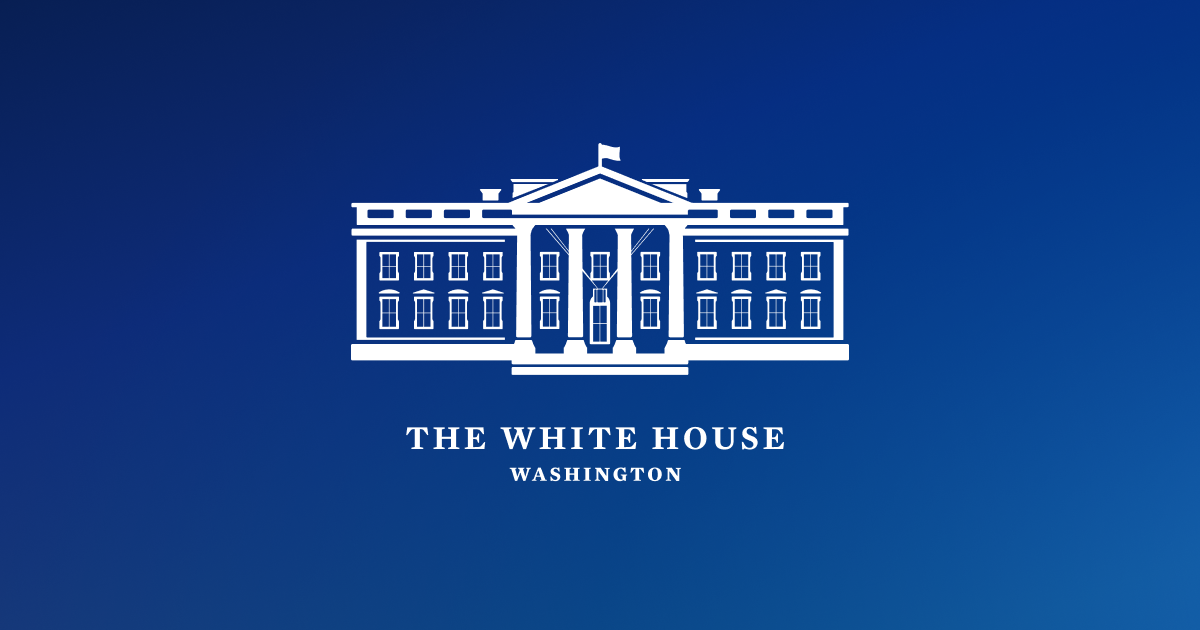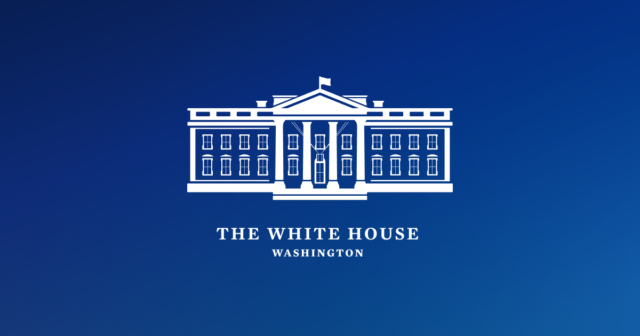
During this century, major powers have deployed economic sanctions and other restrictive tools of economic statecraft to an unprecedented degree. The number of sanctioned individuals and entities across the world has increased by an order of magnitude since 2000.[1] Tariffs and other trade restrictions have tripled over the past five years.[2] The percentage of OECD countries screening investments in sensitive sectors has risen over the past decade from less than a third to more than 80 percent,[3] while the number of countries with sophisticated export controls has quadrupled since their inception during the Cold War.
These trends are global, and while precise data are difficult to source in many jurisdictions, the growth of restrictive economic measures is accelerating both from the United States and our strategic rivals. China, despite having issued the lowest cumulative number of explicit sanctions among major economies, increased its designation activity by almost 100 percent last year – the highest rate of growth within this peer group – on top of its existing array of informal and extralegal barriers such as consumer boycotts, tourism restrictions, phytosanitary standards, and corporate pressure.[4] Russia, for its part, now applies its own sanctions regime at scale and is routinely weaponizing its commodity exports – including nickel, tin, titanium, refined uranium, and, of course, oil and gas – to coerce trading partners and adversaries.[5]
Structural Forces & Shocks Underpin the Rise of Restrictive Statecraft
In my judgment the trendlines are set to extend, for three main reasons.
First, sanctions and other restrictive measures are symptomatic of new and durable geopolitical realities. We’re no longer in the post-Cold War, unipolar order that underpinned the so-called “great moderation” in the global economy. Instead, we’ve returned to the “old normal” that prevailed for much of modern history, in which divergent forms of national governance and political ideology lead to intense geopolitical competition, less opportunity for cross-border cooperation, and greater risk of cross-border conflict. Since most of today’s “great powers” are also nuclear powers, barring catastrophic miscalculation, the logic of mutually assured destruction suggests that direct competition is likely to continue playing out mostly in the theaters of economics, technology, and energy rather than in kinetic conflict on the battlefield. Set against this backdrop, the range of potential outcomes – the promise and peril for major powers to rise and fall – has widened, ushering in an era of more active use of economic tools to shape the course of events.
Second, these trends reflect opportunity. Though we’ve left the era of hyper-globalization, the world economy is still nearly as connected as ever – which provides scope for economic powers to break existing linkages (or threaten to do so) in exchange for geopolitical leverage. The ratio of global trade to global GDP has plateaued not far from the peak reached earlier this century.[6] Worldwide foreign direct investment declined sharply after the pandemic but is rebounding and still exceeds the long-term historical average at well above a trillion dollars per year.[7] Technology diffusion across borders remains largely unabated for all but the most sensitive items, in part because U.S. restrictions on technology remain narrow and targeted.[8]
Third, the succession of cross-border shocks this century – most prominently the COVID pandemic, but also financial crises, climate change, mass migration, and acute episodes of energy and food insecurity – has punctuated the sense among policymakers that the singular pursuit of maximal efficiency and minimal cost will leave critical supply chains insufficiently resilient. Here in the United States, the Biden Administration centered its geoeconomic strategy on making long overdue public investments at home and building partnerships abroad to strengthen and scale our productive capacity, but we also imposed targeted tariffs in strategic sectors to level the playing field against competitors playing by a different set of rules. Under the same rationale, many other leading economies have also implemented a similar mix of policies – including tariffs – to “de-risk” their supply chains from disruption and distortion.
Sanctions (and their ilk) Are Never Costless
Indeed, there is a growing policy reflex across the world to navigate a more uncertain and turbulent world by applying a sanction, tariff, export control, or investment restriction. As President Biden has reminded us, however, these measures are never costless. In each instance, they weaken or sever economic bonds that took decades to build, with immediate and sometimes unintended costs for households and businesses. And though in our Administration we’ve deployed restrictive measures in service of a higher geopolitical objective – not as an end to themselves – their repeated use can invite skepticism about American stewardship of the global economy.
To the extent that our use of restrictive tools is perceived as arbitrary or illegitimate, the incentive to “hedge” against perceived dependency on the United States will rise. China and Russia are making every effort to increase their (and others’) capacity to do so in finance, technology, and other domains in which the United States has a dominant position.
Take, for instance, China’s longstanding effort to build a cross-border payment architecture without any nexus to the U.S. financial system – and therefore outside the reach of U.S. sanctions authorities.[9] Several non-aligned G20 economies have already signed up for this platform, and while the volumes transacted are far from reaching a threshold of macroeconomic significance, they have already surpassed a threshold of geopolitical consequence, with a run rate large enough to intermediate a significant portion of Russia’s procurement of dual-use items from China that are finding their way to the battlefield in Ukraine.
In addition to strengthening the incentives to hedge against the sources of American economic power, the unconstrained use of restrictive economic statecraft also invites efforts by adversaries to deploy these same tools to target our own and our allies’ vulnerabilities.
This isn’t conjecture, but rather a description of reality. The PRC is by far the world’s largest supplier of manufactured goods, accounting for almost a third of global manufacturing in value-added terms – equivalent to the combined production capacity of the United States, India, Japan, Germany, and South Korea.[10] From this position of strength, China has already weaponized its economic leverage in its attempts to coax geopolitical concessions from trading partners such as Lithuania, Australia, Japan, and South Korea.[11] It also has untapped potential to exploit chokepoints in a wide range of supply chains in which it has dominant market share and where the current production capacity of the United States and our allies is limited (for now), including medical equipment, ship-to-shore cranes, solar panels, EV batteries, pharmaceutical ingredients, critical minerals, and lagging-edge semiconductors. Russia restricted its export of enriched uranium last November, creating the risk of disruption to our and allied nuclear power production, and for years has attempted to coerce Europe by modulating its supply of natural gas. Iran and its proxy forces have repeatedly exploited their control over the Strait of Hormuz and Red Sea shipping lanes to pressure the United States and its allies.
The Urgent Need for Limiting Principles
Against this backdrop, we have an urgent need to implement a set of principles that guide and constrain why, when, how, and to what extent we deploy restrictive economic tools. I believe this effort should have three overarching goals: first, to sustain the credibility and potency of America’s economic statecraft toolkit for when we need it most; second, to prevent an escalatory tit-for-tat in the use of restrictive tools that could make the United States and the world worse off; and third, to update the rules of the international economic order we’ve worked to build and sustain for over 70 years.
I suggest we seek to embed five principles in the practice of restrictive economic statecraft, first in our conduct, and then among allies, non-aligned countries, and eventually our adversaries.
First, economic and financial sanctions should be used sparingly, and in service of clearly defined and achievable geopolitical objectives.
Sanctions are a tool, and often a force multiplier, but never a standalone strategy. They should be designed and deployed in service of a geopolitical objective that policymakers outline prior to implementation and assess periodically afterwards.
Prior to articulating the objective, policymakers would be well served to analyze and explain – at least internally – how they expect an economic measure to influence the decision-making calculus of the target, how they are expected to reinforce other levers of foreign policy (e.g., military, diplomatic, humanitarian), and the degree to which a multilateral coalition is necessary for their success.
These objectives could be pursued before an adverse “trigger” event occurs, either to deter a target’s malign behavior, degrade its capabilities, or both. Alternatively, or additionally, these measures can be imposed after a trigger event to impose costs, change the calculus of the target, or create leverage for an eventual settlement.
In every instance, the objective should be achievable. Efforts to engineer regime change through maximalist sanctions, for example, predictably fail to persuade the target (often an autocrat) that the benefits of sanctions relief outweigh the costs of giving up power (typically jail, or worse).
Relatedly, the individuals or entities being sanctioned need to know why and for what behavior they are being penalized, so that the consequences of an action – whether it’s support for a terrorist organization, a serious human rights abuse, or the prosecution of an illegal war – are understood, such that the key actors can ultimately seek the reversal of sanctions through a change in behavior.
Second, the force of restrictive actions should be responsibly calibrated to their expected impact, spillovers, and uncertainties.
As the leading economic and geopolitical force in the world, restrictive measures imposed by the U.S. are capable of imposing great and lasting harm, producing ripple effects that are impossible to identify fully in advance. The force of our restrictive actions must be calibrated in proportion to their expected impact, spillover costs, and the uncertainties involved.
This requires the U.S. government to continue building the analytical muscle to conduct rigorous, data-driven analyses on historical and imagined scenarios in which restrictive measures could be implemented – whether unilaterally or multilaterally, alone or in tandem with military and diplomatic actions, before or after a trigger event.
Assessments should highlight the degree to which the range of outcomes depends on the breadth of the implementing coalition, the target’s potential to mitigate the impact (e.g., by substituting the good or service with domestic supply or import from third countries), and our own vulnerabilities and potential for risk mitigation in an extended and escalatory conflict.
Third, policymakers must consider explicitly and upfront the efficacy of restrictive measures on the decision-making calculus of the target.
The design of restrictive measures is typically prepared by those with expertise on how to impose costs on the macroeconomy and financial system of the target while minimizing spillovers to the U.S. and global economy. While this is a vital and necessary contribution, the ultimate success of restrictive measures depends on how these costs are likely to influence the decisions of key actors in the target country or entity. It also depends on the extent to which these actors are influenced by their economic, political, social, and humanitarian impact on political elites and the civilian population. Meeting the analytical test of sufficiency requires the upfront and explicit integration of economic analysis with political intelligence.
Fourth, restrictive measures should be maximally coordinated, both with domestic stakeholders and international partners.
Unity with partners multiplies the impact of restrictive measures – due to the higher impact it delivers on the target, the reduced opportunity for evasion, and the perceived legitimacy of the action. This last point on legitimacy is critical: when we act together, it makes clear that our purpose is not the unilateral exercise of brute economic force, but rather the collective defense of shared principles that underpin peace and security.
It’s also critical that restrictive measures are explained to the range of stakeholders that transmit the force of restrictive policies to the real world – including private sector institutions, the regulatory community, and central banks. Private sector actors, in particular, often represent the “front lines” of implementing financial sanctions and export controls, and we depend on their cooperation and sense of civic duty to spot and counter circumvention. In exchange, we owe them clarity and coordination.
Finally, restrictive measures must be flexible and adjust to unintended consequences, evolving economic conditions, and the reaction of the target.
Even after exhaustive analysis and careful design, restrictive measures are blunt tools that are typically implemented under conditions of high uncertainty – often with little or no precedent from which to make confident projections about their likely effects.
It should surprise no one when the impact delivered, or spillovers caused, are materially different than expected. Humility requires us to admit when we’re mistaken in our judgments and course correct as needed.
Separately, the context in which restrictive measures are applied inevitably evolves over time. The coalition that implements sanctions may grow or decline. Economic and financial conditions may change for the better or worse, both in the target country and within the implementing coalition. Political and power dynamics within the target country may harden or soften, along with the behavior we seek to influence.
All of these are reasons why we must have timely and demonstrated pathways to ratchet higher or lower the scale and scope of restrictive measures, to adjust the channels through which we generate impact, and to stand ready for mitigation of unanticipated risks or costs.
Towards an Economic Geneva Convention
Under the leadership of President Biden and National Security Advisor Jake Sullivan, we’ve made important strides in putting these limiting principles into practice – not in a formalistic sense, but in real-time as events unfolded – and often in ways that were never made public. Each of the principles I’ve just described animated the design and execution of the sanctions program against Russia; the intuition of the oil “price cap” coalition; the logic of the “small yard and high fence” for our export controls and investment restrictions; and the targeted nature of the tariffs we deployed against China in strategic sectors.
I’d like to close my remarks, and my time in government, with three recommendations on how to institutionalize these practices. Of course, it won’t be for those of us in the Biden Administration to decide whether and how these get implemented, but I believe emphatically they each would serve to advance our shared bipartisan interests of safeguarding America’s national security, while enhancing our economic prosperity.
First, much as we restructured our national security apparatus amid rising tensions in the aftermath of Second World War, this is a moment to evaluate whether the U.S. government’s organizational design for conducting economic statecraft is fit for purpose. Too many of our tools and subject matter experts are spread across too many agencies without a unifying set of incentives, objectives, and metrics for strategic success. Japan pioneered the elevation of economic security to a Cabinet level in 2021, and we would be wise to consider following suit in this new era of geoeconomic competition – particularly to strike a deliberate balance between restrictive tools that impose economic pain and positive tools that offer the prospect of mutual economic gain.
Second, we must continue to upgrade what I’ve described previously as the “analytical infrastructure” of economic statecraft – the personnel, technology, data, and connectivity to continually assess the efficacy, limitations, and tradeoffs of using our restrictive tools; to “stress test” and wargame their use against historical and simulated scenarios; to anticipate how and where evasion is likely to occur and build readiness for countermeasures in real time; to build surveillance capabilities that provide early warnings on developing threats; and to maintain the capacity to execute at pace, even if multiple conflicts emerge at once. While these and other demands on the practitioners of economic statecraft have grown exponentially, their available resources have increased only at a linear rate, and in some cases much less.[12]
Finally, we should begin a series of conversations that aim to forge a common vision on the rules of engagement on why, when, how, and to what extent restrictive measures are used. We should start with our allies and then seek to build consensus with non-aligned or multi-aligned countries. Ultimately, in the same spirit of the Geneva Conventions, we must include our adversaries in a good faith effort to avoid creating a fractured economic system that damages lives and livelihoods across the world, and brings us closer to the hot conflicts that economic statecraft seeks to avoid.
[1] 2021 Treasury Sanctions Review and Atlantic Council analysis of Castellum.AI data.
[2] IMF data. https://www.imf.org/en/News/Articles/2024/05/07/sp-geopolitics-impact-global-trade-and-dollar-gita-gopinath
[3] BCG analysis of OECD data. https://www.bcg.com/publications/2024/economic-statecraft-is-back
[4] Castellum.AI data. https://www.castellum.ai/insights/2024-sanctions-year-in-review
[5] Atlantic Council analysis of Castellum.AI data. https://www.atlanticcouncil.org/blogs/econographics/global-sanctions-dashboard-sanctioning-soars-across-the-board/
[6] Oxford University analysis of World Bank data. https://ourworldindata.org/grapher/trade-as-share-of-gdp?tab=chart
[7] According to the Kearny 2024 Investor Confidence Survey, 88 percent of investors globally said that they were planning to increase their FDI in the next three years — 6 percent more than last year. Kearny has tracked FDI optimism since the 1990s through annual survey data. https://www.kearney.com/service/global-business-policy-council/foreign-direct-investment-confidence-index
See UN Trade & Development data for year-over-year global FDI. https://unctad.org/data-visualization/global-foreign-direct-investment-flows-over-last-30-years
[8] See National Security Advisor Sullivan remarks on “small yard, high fence.” https://www.whitehouse.gov/briefing-room/speeches-remarks/2023/04/27/remarks-by-national-security-advisor-jake-sullivan-on-renewing-american-economic-leadership-at-the-brookings-institution/
According to the International Trade Administration, 95 percent of all items exported from the United States do not require an export license. https://www.trade.gov/us-export-licenses-navigating-issues-and-resources
[9]China has been working on a “one-stop-shop” since 2016 for messaging and settlement of financial payments through its Cross-Border Interbank Payments System, or CIPS, and most recently with its wholesale central bank digital currency (CBDC) experiment, the mBridge Project. https://www.atlanticcouncil.org/blogs/new-atlanticist/not-so-fast-the-case-for-a-new-swift/
[10] Center for Economic Policy Research / Vox analysis of OECD data. https://cepr.org/voxeu/columns/china-worlds-sole-manufacturing-superpower-line-sketch-rise
[11] Australia Strategic Policy Institute analysis. https://ad-aspi.s3.ap-southeast-2.amazonaws.com/2023-02/Countering%20Chinas%20coercive%20diplomacy_1.pdf?VersionId=HZDwezgnFY5eitQqtEMEU7WuFci8S75z
[12] To give one example, Treasury’s Office of Foreign Asset Control is using IT systems developed in the 1970s.
Mortgage News From Whitehouse.gov








